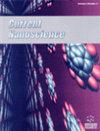含甲硝唑纳米颗粒的薄膜可提高渗透性,促进牙周组织恢复
IF 1.5
4区 材料科学
Q4 BIOTECHNOLOGY & APPLIED MICROBIOLOGY
引用次数: 0
摘要
背景:感染是引导组织再生(GTR)临床应用失败的主要原因。研究目的本研究旨在开发一种含有抗菌药物甲硝唑的纳米颗粒膜(MTZ-NPs 膜),以增强药物向细胞的渗透输送,促进牙周组织的恢复和再生:本研究旨在开发一种含有抗菌药物甲硝唑的纳米颗粒膜(MTZ-NPs 膜),以增强药物对细胞的渗透输送,促进牙周组织的恢复和再生。方法:我们制备了含有甲硝唑纳米颗粒的膜(MTZ-NPs 膜),并对其机械性能、理化性能和释放等特性进行了表征。使用香豆素-6 制备了含有掺入香豆素-6 的纳米颗粒的膜(C6-NPs 膜),以评估纳米颗粒负载膜跨膜进入细胞的效率。此外,我们还进行了体内实验,以评估膜的有效性:我们制备了含有甲硝唑纳米颗粒的膜(MTZ-NPs 膜),并对其机械性能、理化性能和释放等特性进行了表征。用香豆素-6 制备了含有掺入香豆素-6 的纳米颗粒的膜(C6-NPs 膜),以评估纳米颗粒负载膜跨膜进入细胞的效率。为了评估该膜的有效性,还进行了体内实验。结果MTZ-NPs膜具有合适的机械强度;药物通过扩散释放。傅立叶变换红外光谱(FTIR)、差示扫描量热法(DSC)和 X 射线衍射(XRD)结果表明,甲硝唑在膜中呈无定形状态,与聚合物有良好的相容性。体外细胞毒性实验表明,MTZ-NPs 膜具有良好的生物相容性。细胞对C6-NPs膜的吸收率明显高于C6膜(p < 0.0001),这表明将药物封装在纳米颗粒中可增加药物的渗透性,提高药物在细胞膜上的转运效率。组织学分析表明,MTZ-NPs 膜可促进牙周组织恢复。结论MTZ-NPs膜能提高药物在细胞内的渗透输送,在治疗牙周病方面具有良好的前景:MTZ-NPs膜能改善药物在细胞内的渗透输送,在治疗牙周病方面具有良好的前景。本文章由计算机程序翻译,如有差异,请以英文原文为准。
Membranes Containing Nanoparticles Incorporated with Metronidazole for Improved Permeability to Promote Periodontal Tissue Recovery
Background: Infection is the main reason for the failure of the clinical application of guided tissue regeneration (GTR). Objective: The aim of this study is to develop a membrane containing nanoparticles incorporated with the antimicrobial drug metronidazole (MTZ-NPs Membrane) to enhance drug permeation delivery into cells and promote periodontal tissue recovery and regeneration. objective: The aim of this study is to develop a membrane containing nanoparticles incorporated with the antimicrobial drug metronidazole (MTZ-NPs Membrane) to enhance drug permeation delivery into cells and promote periodontal tissue recovery and regeneration. Methods: We prepared membranes containing nanoparticles incorporated with metronidazole (MTZ-NPs Membrane) and characterized the properties, such as mechanical properties, physicochemical properties, and release. Coumarin-6 was used to prepare a membrane containing nanoparticles incorporated with Coumarin-6 (C6-NPs Membrane) to evaluate the efficiency of the nanoparticles-loaded membranes on transmembrane entry into cells. Moreover, in vivo experiments were conducted to assess the effectiveness of the membrane. method: We prepared membranes containing nanoparticles incorporated with metronidazole (MTZ-NPs Membrane) and characterized the properties such as mechanical properties, physicochemical properties and release. Coumarin-6 was used to prepare a membrane containing nanoparticles incorporated with Coumarin-6 (C6-NPs Membrane) to evaluate the efficiency of the nanoparticles-loaded membranes on transmembrane entry into cells. To assess the effectiveness of the membrane, in vivo experiments were conducted. Results: MTZ-NPs membrane had suitable mechanical strength; the drug was released by diffusion. Fourier Transform Infrared Spectroscopy (FTIR), differential scanning calorimetry (DSC), and X-ray diffraction (XRD) results showed the existence of metronidazole in the amorphous state in the membrane and had good compatibility with polymers. The in vitro cytotoxicity assays showed that the MTZ-NPs membrane was biocompatible. Cellular uptake of the C6-NPs membrane was significantly higher than that of the C6 membrane (p < 0.0001), signifying that encapsulating the drug in nanoparticles increases drug permeability and improves drug transport efficiency across the cellular membrane. The histological analysis showed that the MTZ-NPs membrane could promote periodontal tissue recovery. Conclusion: MTZ-NPs membrane can improve drug penetration delivery into the cells and has a good prospect for the treatment of periodontal disease. conclusion: MTZ-NPs Membrane can improve drug penetration delivery into the cells and has a good prospect for the treatment of periodontal disease.
求助全文
通过发布文献求助,成功后即可免费获取论文全文。
去求助
来源期刊

Current Nanoscience
工程技术-材料科学:综合
CiteScore
3.50
自引率
6.70%
发文量
83
审稿时长
4.4 months
期刊介绍:
Current Nanoscience publishes (a) Authoritative/Mini Reviews, and (b) Original Research and Highlights written by experts covering the most recent advances in nanoscience and nanotechnology. All aspects of the field are represented including nano-structures, nano-bubbles, nano-droplets and nanofluids. Applications of nanoscience in physics, material science, chemistry, synthesis, environmental science, electronics, biomedical nanotechnology, biomedical engineering, biotechnology, medicine and pharmaceuticals are also covered. The journal is essential to all researches involved in nanoscience and its applied and fundamental areas of science, chemistry, physics, material science, engineering and medicine.
Current Nanoscience also welcomes submissions on the following topics of Nanoscience and Nanotechnology:
Nanoelectronics and photonics
Advanced Nanomaterials
Nanofabrication and measurement
Nanobiotechnology and nanomedicine
Nanotechnology for energy
Sensors and actuator
Computational nanoscience and technology.
 求助内容:
求助内容: 应助结果提醒方式:
应助结果提醒方式:


